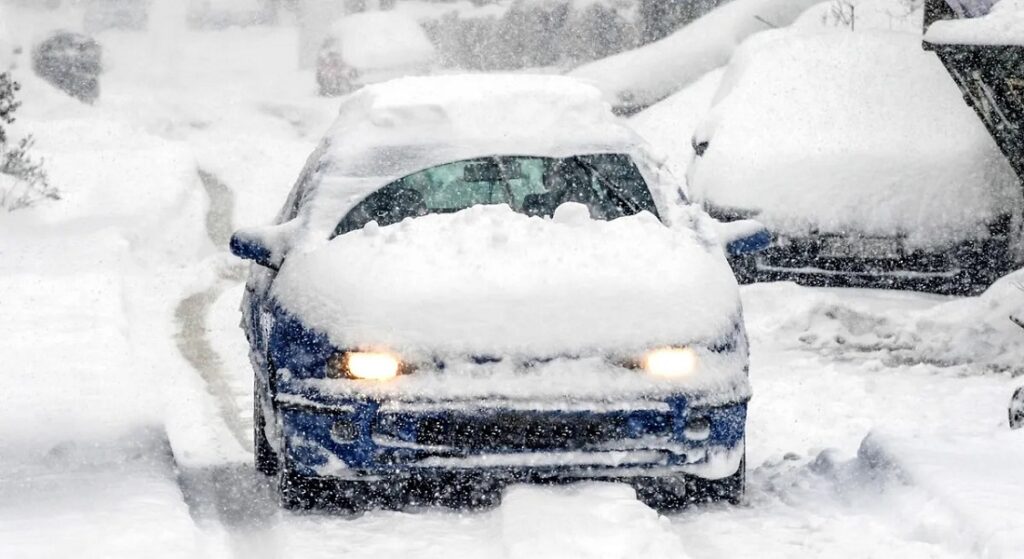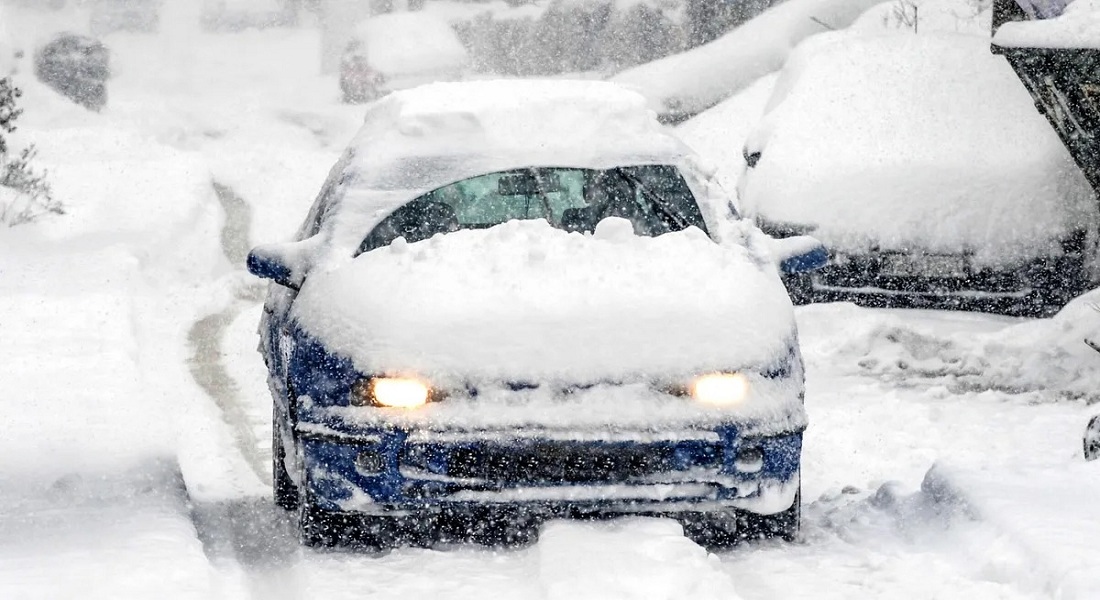The sudden and unexpectedly heavy snowfall that has blanketed the Great Lakes region this week has been more than just an inconvenience; it has already claimed lives.
A man near Buffalo, New York, was discovered dead in his vehicle after the area was hit with more than 4 feet of snow. Anyone who lives in a region of the country where a harsh winter is an annual reality should have a deep fear of becoming trapped in a blizzard.
Staying indoors, preferably in a home that is well stocked with emergency provisions like food, water, flashlights, and a battery-powered crank radio, is the best course of action if a blizzard warning is issued and heavy snowfall is expected.
However, there are measures you can take if you find yourself on the road that will help you avoid becoming a statistic.

- Gas up. If you expect travel delays or to become stranded, it’s best to leave with a nearly full gas tank.
- Have an emergency kit on hand. Always have these wintertime necessities on hand in your car: Pillows, blankets, extra layers of clothing, nonperishable food, water, a flashlight with extra batteries, any necessary prescription medications, a first aid kit, hand warmers, a whistle, a snow shovel, an ice scraper, and jumper cables. (Yes, this list is long; however, if you ever find yourself in a bind, you will be grateful that you took the time to compile it.)
- Charge your phone. It’s important to keep your phone charged in case you need to make an emergency call. Reduce your phone’s use as much as possible to prolong its battery life.
- Be visible. Put something colorful around your antenna if you get snowed in. It’s a standard distress signal. It’s also a good idea to use the emergency whistle you packed.
- Stay in the car. It’s cold and confining inside, but that’s better than braving the winter storm outside.
- Check the tailpipe. If you’re going to be sitting in the car with the engine on, this is a simple way to prevent a potentially fatal buildup of carbon monoxide. It’s also a good idea to leave the back window slightly ajar so that fresh air can circulate and help prevent any possible poisoning.
- Switch on and off the engine. Keep your car warm and melt some of the snow and ice by running the engine for 10 to 15 minutes per hour.
- Turn on the overhead light. You’ll be able to see what’s going on inside the vehicle, and rescue workers will be able to locate you more easily.
- Keep moving. Avoid frostbite by keeping your blood always moving, from your fingers and toes to your entire body.
- Warm each other up. If you’re riding in a car with other people, cuddle up to stay warm.
Keep warm and safe in your car until the snow stops falling. It may seem like an age, but you’ll have the best chance of making it through if you stock up on necessities in advance and expect the worst.

